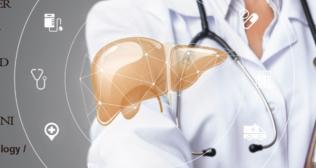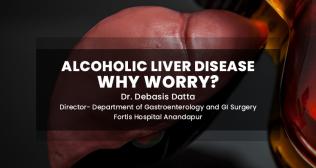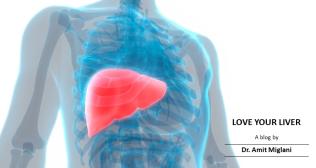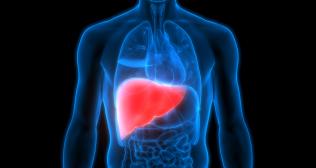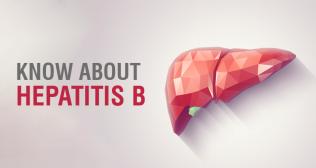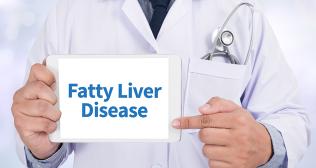
What is Non-Alcoholic Fatty Liver Disease (NAFLD)
Introduction
Non-alcoholic fatty liver disease (NAFLD) is a prevalent condition indicated by fat accumulation in the liver. Despite its name, NAFLD is not associated with excessive alcohol consumption. Instead, it primarily affects individuals who are overweight or obese. While early-stage NAFLD may not cause noticeable harm, it can progress to severe liver damage, including cirrhosis, if left untreated. This article delves into the various aspects of NAFLD, including its prevalence, risk factors, stages, symptoms, diagnosis, and management.
Prevalence
NAFLD can impact individuals across all age groups, including children. Research suggests that in India, the prevalence of NAFLD is significant, with approximately 38.6% among adults and 35.4% among children. Although age plays a significant role in its development, genetic factors may also contribute as risk factors.
Risk Factors for NAFLD
- Obesity or being overweight
- Type 2 diabetes
- Insulin resistance
- High blood pressure
- High cholesterol
- Metabolic syndrome
- Age over 50
- Smoking
NAFLD can also occur in individuals without these risk factors.
Stages of NAFLD
NAFLD progresses through four main stages:
- Simple Fatty Liver (Steatosis): Characterized by the accumulation of fat in liver cells, often asymptomatic and usually diagnosed incidentally
- Non-Alcoholic Steatohepatitis (NASH): Involves liver inflammation and is more severe than simple steatosis
- Fibrosis: Persistent inflammation leads to the formation of scar tissue surrounding the liver and blood vessels, but liver function remains intact
- Cirrhosis: The most severe stage, marked by extensive liver scarring, impaired liver function, and an increased risk of liver failure and cancer
Symptoms
NAFLD is typically asymptomatic in its early stages. However, individuals with advanced stages, such as NASH or cirrhosis, may experience symptoms such as:
- Severe abdominal pain
- Fatigue
- Unexplained weight loss and weakness
- Yellowing of the skin or eyes
- Persistent itching that lasts for an extended period
Diagnosis
Fatty liver disease often progresses silently, exhibiting no noticeable symptoms in many cases. Diagnosis is performed to monitor individuals with suspected fatty liver disease, particularly those who are obese, prompting healthcare providers to conduct further investigation. This typically involves:
- Liver function tests
- Ultrasound and magnetic resonance imaging scan
- Liver biopsy
When patients exhibit elevated liver enzymes, like liver transaminases or gamma-glutamyl transferase, or show signs of hepatic steatosis on abdominal ultrasound, it’s imperative to take proactive steps by seeking timely medical advice to investigate the possibility of NAFLD.
Mechanisms of NAFLD
- Initial Accumulation of Hepatic Lipids: A sedentary lifestyle, high-fat diet, obesity, and insulin resistance contribute to the initial accumulation of lipids in the liver. It serves as the first hit, sensitizing the liver.
- Sensitization of Liver: Hepatic lipid accumulation primes the liver, making it more susceptible to subsequent damage, referred to as the “second hit.”
- Activation of Inflammatory Cascades and Fibrogenesis: Upon experiencing the “second hit,” inflammatory cascades and fibrogenesis are initiated within the liver. Additionally, multiple concurrent factors synergistically contribute to this process, particularly in genetically predisposed individuals.
Complications
Liver complications associated with NAFLD include cirrhosis and liver cancer, particularly in individuals with NASH. Those with cirrhosis may require liver transplantation if liver failure occurs. Additionally, NAFLD increases the risk of cardiovascular disease, type 2 diabetes, hypertension, and abnormal lipid levels, further emphasizing the significance of early detection and management.
Management of NAFLD: Addressing Lifestyle, Treatment, and Future Perspectives
Lifestyle adjustments constitute the primary strategy for managing NAFLD and are applicable across all age groups.
- Healthy Eating Habits: Prioritizing a balanced diet rich in whole grains, fruits, vegetables, seafood, beans, and nuts is pivotal. This dietary approach, exemplified by the Mediterranean diet, has shown notable benefits over traditional Western eating patterns.
- Weight Management: Attaining and sustaining an optimal body weight is essential. Emphasis is placed on strategies for weight loss that, when necessary, are tailored to an individual’s needs and health status.
- Regular Physical Activity: Incorporating routine exercise into daily life is crucial. Regular physical activity helps improve metabolic health and aids in the management of NAFLD symptoms and risk factors.
Treatment Approaches
While lifestyle changes are pivotal, more severe cases may require advanced therapeutic interventions. Bariatric surgery emerges as a viable option for select patients, demonstrating the potential for reversing NASH and mitigating fibrosis in specific individuals over the long term. However, surgical interventions are limited to a minority of patients, accentuating the demand for pharmacological therapies. Clinical trials have demonstrated the effectiveness of drugs like pioglitazone and vitamin E, particularly in non-diabetic NASH patients, suggesting avenues for future pharmacotherapy.
Future Directions
Future pharmacological strategies may target upstream events that contribute to substrate overload. Insights into the genetic regulation of eating-related reward signaling and peripheral input to central nervous system metabolism control offer promising avenues for novel therapeutic development.
By addressing not only liver pathology but also components of the metabolic syndrome, such as central nervous system control of satiety mechanisms and energy efficiency, future treatments hold potential for broader metabolic benefits beyond liver-specific outcomes.
While there is no specific medication for NAFLD, lifestyle modifications play a crucial role in its management. Weight loss, achieved through a balanced diet and regular exercise, is particularly effective in reducing liver fat and improving NASH. Medications can be prescribed to manage comorbid conditions, such as hypertension, diabetes, and high cholesterol. In severe cases of cirrhosis, liver transplantation may be necessary.
Conclusion
Understanding NAFLD’s risks, stages, symptoms, and management is crucial for early intervention, given its severe consequences if untreated. By adopting a healthy lifestyle and following medical advice, one can mitigate the progression of NAFLD and reduce the risk of associated complications. Regular monitoring and proactive management are crucial to preserving liver health and well-being.
Popular Searches :
Hospitals: Cancer Hospital in Delhi | Best Heart Hospital in Delhi | Hospital in Amritsar | Hospital in Ludhiana | Hospitals in Mohali | Hospital in Faridabad | Hospitals in Gurgaon | Best Hospital in Jaipur | Hospitals in Greater Noida | Hospitals in Noida | Best Kidney Hospital in Kolkata | Best Hospital in Kolkata | Hospitals in Rajajinagar Bangalore | Hospitals in Richmond Road Bangalore | Hospitals in Nagarbhavi Bangalore | Hospital in Kalyan West | Hospitals in Mulund | Best Hospital in India | Gastroenterologist in Jaipur | Cardiology Hospital in India
Doctors: Dr. Rana Patir | Dr. Rajesh Benny | Dr. Rahul Bhargava | Dr. Jayant Arora | Dr. Anoop Misra | Dr. Manu Tiwari | Dr. Praveer Agarwal | Dr. Arup Ratan Dutta | Dr. Meenakshi Ahuja | Dr. Anoop Jhurani | Dr. Shivaji Basu | Dr. Subhash Jangid | Dr. Atul Mathur | Dr. Gurinder Bedi | Dr. Monika Wadhawan | Dr. Debasis Datta | Dr. Shrinivas Narayan | Dr. Praveen Gupta | Dr. Nitin Jha | Dr. Raghu Nagaraj | Dr. Ashok Seth | Dr. Sandeep Vaishya | Dr. Atul Mishra | Dr. Z S Meharwal | Dr. Ajay Bhalla | Dr. Atul Kumar Mittal | Dr. Arvind Kumar Khurana | Dr. Narayan Hulse | Dr. Samir Parikh | Dr. Amit Javed | Dr. Narayan Banerjee | Dr. Bimlesh Dhar Pandey | Dr. Arghya Chattopadhyay | Dr. G.R. Vijay Kumar | Dr Ashok Gupta | Dr. Gourdas Choudhuri | Dr. Sushrut Singh | Dr. N.C. Krishnamani | Dr. Atampreet Singh | Dr. Vivek Jawali | Dr. Sanjeev Gulati | Dr. Amite Pankaj Aggarwal | Dr. Ajay Kaul | Dr. Sunita Varma | Dr. Manoj Kumar Goel | Dr. R Muralidharan | Dr. Sushmita Roychowdhury | Dr. T.S. MAHANT | Dr. UDIPTA RAY | Dr. Aparna Jaswal | Dr. Ravul Jindal | Dr. Savyasachi Saxena | Dr. Ajay Kumar Kriplani | Dr. Nitesh Rohatgi | Dr. Anupam Jindal |
Specialities: Heart Lung Transplant | Orthopedic | Cardiology Interventional | Obstetrics & Gynaecology | Onco Radiation | Neurosurgery |







